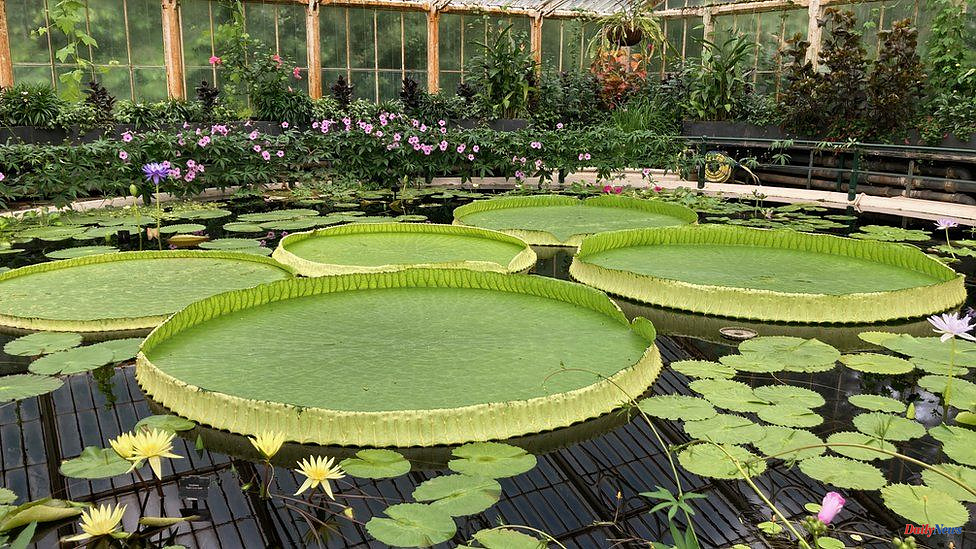A new giant water lily species has been discovered. It's been hidden in plain sight for 177 year.
This huge plant was found in the Royal Botanic Gardens Kew archives. It was being grown in several aquatic collections, but was incorrectly identified as another species.
A scientific study of the matter has shown that it is new in science.
It is also the largest water lily in the world, growing leaves more than 3m (10ft).
Victoria boliviana is the name given to the plant. It was named after Bolivia, where it can be found in one water basin of the Amazon river.
Carlos Magdalena, a leading water lily expert and horticulturist, has long suspected that the plant was not like the two other giant species Victoria amazonica or Victoria cruziana.
He worked with scientists from Bolivia to collect seeds and bring them back to Kew.
BBC News was told by him that it meant the plant could be grown side-by-side with other species in exactly the same conditions. After doing this, we could clearly see that each part of the plant was completely different.
The find was described by him as his "highlight" in his career.
Lucy Smith, a botanical illustrator, created detailed scientific drawings for all three species alongside Carlos.
It was also necessary to enter the glasshouse at night, as water lily flowers are only visible in the darkness.
She stated that she was able access the flowers and could also see the leaves. This allowed me to highlight the differences I saw as an illustrator.
"In fact, I discovered new ways to tell them apart while I was drawing these differences."
She said, "Maybe I'm biased but I think [the New Species] has the most beautiful flowers out of all three."
Kew has a long relationship with plants. The Water lily House was constructed in 1852 to display its collection.
The 1800s discovery of giants was a natural wonder of the age. Queen Victoria gave the genus its name after her.
However, scientists believe that water lilies are still a mystery to them.
Dr Alex Monro, RGB Kew explained that "none of these three species have been very thoroughly studied."
"We don't know the number of populations and their size. We don't know much about the biology of pollination. We don't really know much about how the species disperses from one place to the next.
"So, there are still many unknowns. They are so vast and obvious that people haven’t thought to really study them in this depth.
Frontiers in Plant Biology publishes the description of the plant.
Follow Rebecca on Twitter.












